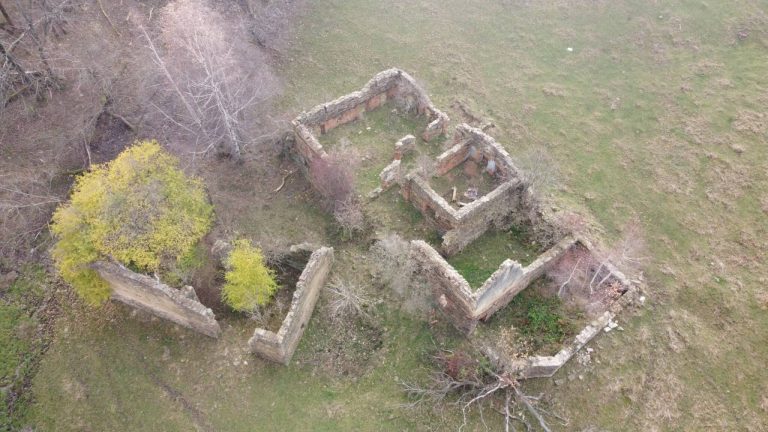Photo: Relics of the last building from the village of Hřibová, Jeseník district. Credit: MENDELU.
Brno, July 12 (BD) – Scientists have mapped more than 100 settlements that disappeared in Moravia and Silesia after the Second World War and in the following years. Educational trails exploring these settlements are now being created at Velké Losin and in Březová nad Svitavou, and will be open to tourists during the holidays. Visitors can learn about history via information panels as well as a mobile application, which will indicate the locations of former buildings.
The Prameny u Žárová and Štolnava u Velké Losin educational trail will open during July. “The mobile application will make it possible to display defunct buildings directly on their original locations on the educational trail via a mobile phone, and an audio recording with the memories of witnesses is also played for these buildings,” explained Hana Vavrouchová from the Institute of Applied and Landscape Ecology at the Faculty of Agronomics of Mendel University (AF MENDELU).
A similar trail is also being created in Muzlov, which is now part of Březová nad Svitavou, and could open as early as August. “The village definitively disappeared in the 1970s in connection with the construction of the II. Brno water supply,” said Vavrouchová. “There is a spring that supplies Brno with drinking water. At this locality, it is still possible to communicate with witnesses who remember life in the village, which we have included in the audio page of the educational trail.”
There are currently very few people still alive who remember these villages. “For the area of Jesenice and Šumperska, it was possible to establish contact with only three witnesses – natives of defunct villages or their descendants who live in Germany today. The settlements here disappeared in connection with the displacement of the original population after the Second World War, so the witnesses are already old or, unfortunately, no longer alive.”
Vavrouchová added, however, that near the villages that disappeared later, such as Dukovany or Muzlov, the researchers were able to locate about six living witnesses, and establish close cooperation with them.
Most of the witnesses perceive leaving their homes as a great loss, even after many years. A number of them mentioned that they took something with them from their homeland, for example a stone, clay or a tree branch.
“The Germans gradually came to terms with it,” said Vavrouchová. “They usually didn’t talk much about it with their children, but as soon as they had a chance to come and see, they came immediately. They were mostly disappointed by the fundamental change in the character of the territory. They also often talked about the fact that before moving away, they buried important things around the village in case they came back, for example dishes or a sewing machine.”
The settlements in Moravia and Silesia disappeared after the Second World War and later. “The vast majority of buildings have been demolished and the area now has a non-residential function. We excluded isolated houses and focused on places with at least three houses originally,” explained Vavrouchová. Mostly, the sites are now forest, permanent grassland or arable land. Alternatively, the locations serve as military districts or a protected zone.
The districts with the most of these disappeared settlements were peripheral areas of the Šumperk, Jeseník and Bruntál districts, with around 60 between them. “The almost exclusive cause of the extinction here was the displacement of the original German population, or the extinction in connection with the construction of the water reservoir in the Bruntál region,” Vavrouchová added. More than 20 settlements disappeared in connection with the establishment of the Libavá military training area, from where the original German population had already been displaced.
Life on the sites was often very demanding. They were located at higher altitudes, with a harsher climate and less fertile soils. “In addition to displacement and subsequent non-settlement, another cause of the demise was the construction of infrastructure. A nuclear power plant was built in Dukovany, and quite a few water reservoirs were also built. Another cause of the demise was mining, although this was only sporadic after the Second World War in the territory of Moravia and Silesia,” described Vavrouchová.
Some of the villages are currently coming to life thanks to volunteers. Last year, a travelling exhibition commemorated the defunct villages, which could be seen in regional museums. It is currently installed permanently at the castle in Slezské Rudoltice. The mapped locations are described in an interactive map, where it is possible to find information about the number of inhabitants, history or reasons for the disappearance of municipalities.
There is also more detailed information about some municipalities on the Modern Chronicle of the Village, where users can upload their own photos, texts, videos or audio recordings, contributing to the memory of the place. Historians from the Institute for Contemporary History of the Czech Academy of Sciences and computer scientists from Masaryk University participated in the five-year project.







